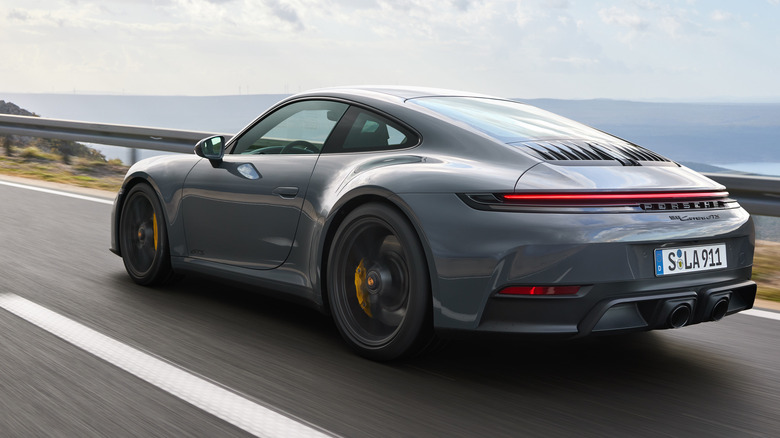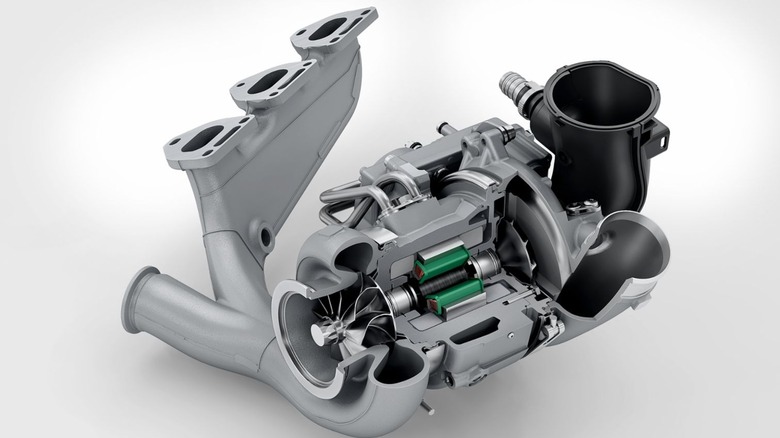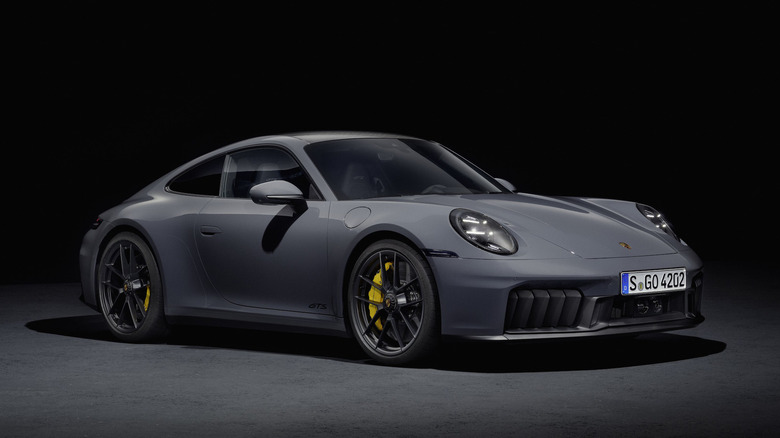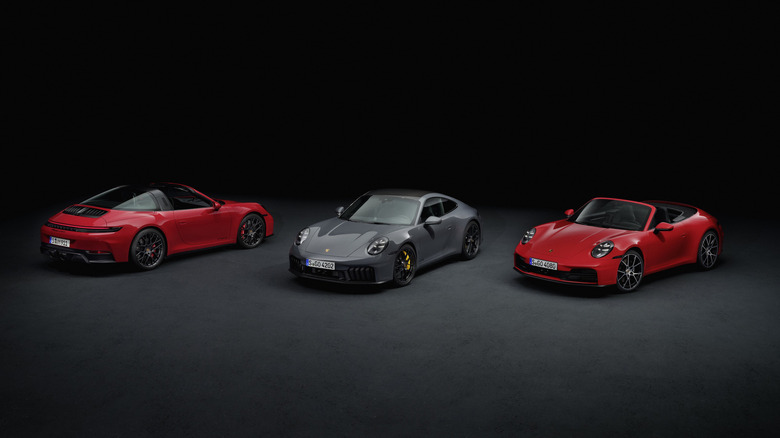The Coolest Part Of The New Porsche 911 Isn't The Hybrid Drivetrain
The newest Porsche 911 has been revealed to the world in all of its hybridized glory. The 2025 Porsche 911 Carrera GTS features a 3.6-liter flat-six paired with an electric motor integrated into Porsche's trademark PDK transmission. Total power output is 532 horsepower. A hybrid drivetrain is a big move for the 911. After all, the 911 is one of the most lauded cars ever made, and the entire series is infamous for, well, not exactly changing a lot.
A few electric motors and batteries integrated into the magic of the Porsche 911, however, isn't that surprising. Anyone who has paid attention to the automotive industry's trajectory over the past few years likely could have predicted that a hybrid 911 was coming sooner or later. It's momentous news for sure, but not completely unexpected. With all of the electrification in the new 911's drivetrain, though, one part has benefitted in a much more interesting way than the rest of the car, and that's the humble turbocharger.
Spooling up excitement
Normally, turbochargers use exhaust gases to spin up a turbine that compresses air and forces it back into the engine, where it combusts with fuel and thus boosts the overall output. The main drawback of a turbo comes down to simple physics: The exhaust can only spool the turbo so fast, and it takes time to get up to the appropriate speed, which can hover around 200,000 rpm. That lost time is referred to as "turbo lag," and can translate to delays in power delivery. While a second or two lost on a highway sprint might not seem like much, those seconds can feel like hours in motorsports.
To counter this, Mercedes-Benz started integrating an electric motor into its newest turbos to virtually eliminate (or at least vastly minimize) turbo-lag. It developed this technology through many years of testing in Formula 1. Porsche is taking this concept much further with the turbo that will make its debut in the 2025 911 GTS. It also uses an electric motor that helps it spool up, but with the added bonus of acting as a generator that can deliver up to 11 kW (14 horsepower) to the battery from waste exhaust gasses.
Special in its own right
Porsche absolutely could have thrown in some electric motors and a battery onto the existing 911 and called it a day to make environmental regulators happy, but it didn't. Instead, it used the hybrid system to its advantage to not only differentiate the 911 GTS from the rest of the lineup, but other hybrids in general. The addition of a new high voltage electrical system allowed Porsche to rework all of the 911's metal guts into something more holistic than just a run of the mill hybrid version of a gas powered car.
In short, it didn't make a 911 that just happened to be a hybrid: It made the 911 hybrid its own, distinct vehicle. On the electrified turbo generator end, Porsche could have used the old turbocharger setup from any number of past forced-induction Porsches, but it decided to take the idea much further by deciding that this could be an opportunity to reset what role a turbocharger plays in this application.
Porsche's brand of magic
By giving the turbocharger something else to do — in this case, acting as a generator — Porsche further sets its hybrid system apart from the electrified turbos from Mercedes and others. It uses the by-product of a turbocharger, that is spinning really fast, and converts that to electricity to go back into the hybrid system of its car. A normal 911, even the more-expensive 911 Turbo, couldn't do that: It requires the high voltage electrical system, the electric motors embedded into the drivetrain, and of course the 400V battery to make the entire electron-filled dance work.
Porsche gets two uses out of one singular device, and that efficiency in purpose translates to not only a more efficient car but, more importantly, a faster and more powerful one, minimizing the weight gain that's endemic of hybrid systems. Porsche is, in effect, driving in two races with one car. The generator side of the new Carrera GTS helps it be a better hybrid, and the turbocharger and weight-saving side helps it be a better 911. We may have had a long wait for the first electrified 911, but there's no denying that Porsche put that time to good use.



